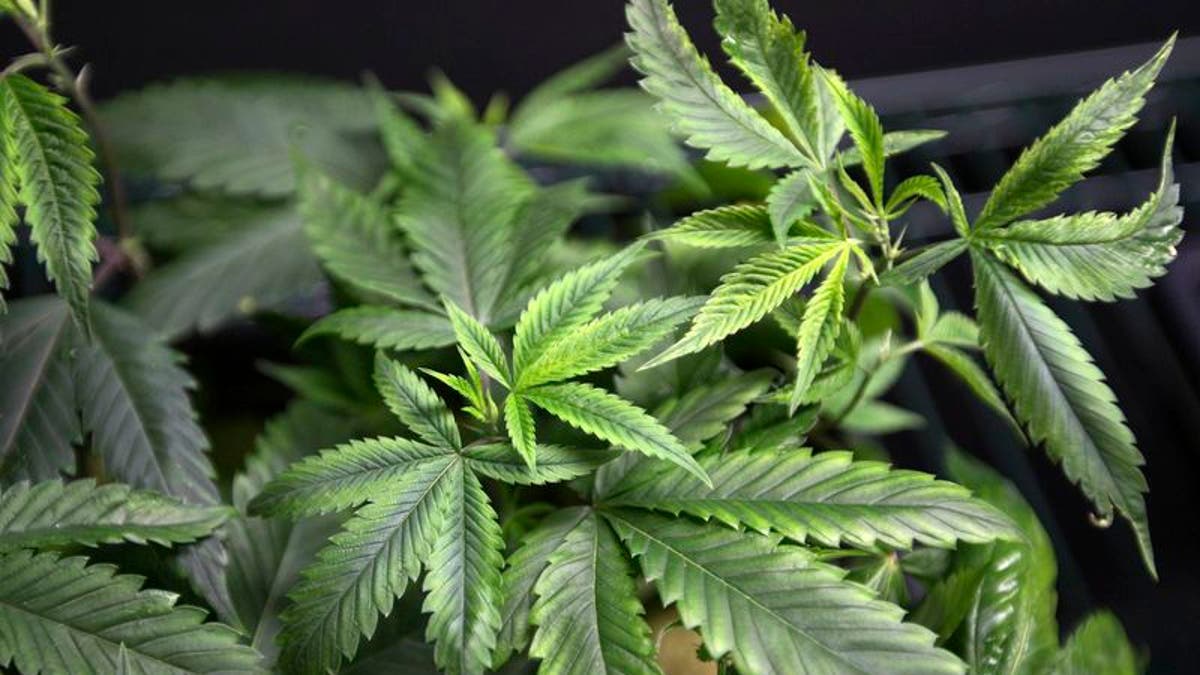
Marijuana plants for sale are displayed at the California Heritage Market in Los Angeles, California, in this file photo taken July 11, 2014. REUTERS/David McNew/Files (Reuters)
Exposure to secondhand marijuana smoke may impair cardiovascular function as much as exposure to tobacco smoke, new research suggests.
The study, which was published Wednesday in the Journal of American Heart Association, found that, in mice, inhalation of secondhand marijuana smoke for one minute diminished blood vessel function to the same degree as inhalation of tobacco smoke for the same amount of time. Researchers also found these cardiovascular effects lasted longer in the mice exposed to marijuana smoke.
Study authors, from the University of California, San Francisco, examined the reduction of flow mediated dilation (FMD)— a process in which increased blood flow forces arteries to open further— in response to secondhand smoke. This reduction, they said, impedes blood flow and puts the individual at risk for various heart problems.
“Your blood vessels can carry more blood if they sense that they need to pass more blood to the tissues,” senior study author Dr. Matthew Springer, a medicine professor at UC San Francisco, said in a news release. “They dilate to allow more blood through. But that’s inhibited by exposure to smoke.”
Researchers exposed the mice to roughly the equivalent amount of smoke found in restaurants that allow smoking. They found that, in the rodents exposed to one minute of marijuana smoke, there was a more than 50 percent reduction in FMD, the same percent reduction seen in mice that contacted cigarette smoke.
FMD in mice exposed to tobacco smoke, however, recovered in 30 minutes. In mice that inhaled marijuana smoke, FMD took 90 minutes to recover completely— the effects on blood vessel function lasting three times longer than the effects from cigarette smoke.
Study authors used ultrasound technology to analyze the widening of the mice’s femoral arteries, which is similar to the brachial artery in the arms of humans.
Researchers also ruled out the possibility that the rolling paper used for marijuana cigarettes was the cause for the cardiovascular effects by testing smoke from marijuana that was not rolled. The results still showed a reduction in FMD, according to the release.
Studies on the effects of secondhand tobacco smoke have been common, but marijuana’s classification as an illicit substance has made studying it more difficult. Researchers said approval from agencies such as the Food and Drug Administration and the Drug Enforcement Agency must first be obtained before a study can begin.
“The biggest reason that people believe marijuana secondhand smoke is harmless is because the public health community hasn’t had direct evidence of its harmful effects like it does with tobacco,” Springer said. “We hadn’t done the experiments, so I think there is definitely an underestimation of how harmful marijuana smoke is.”
Springer was compelled to perform the study after attending a concert in 2010 in which he noticed a haze in the air due to the sheer number of individuals smoking marijuana. He hopes this study will pave the way for clinical trials in humans and make people more aware of the dangers of secondhand smoke in general.
“At this point, we’re saying that inhaling any smoke is detrimental to your health," Springer said. “I think that people should avoid inhaling smoke whether it’s from tobacco or marijuana cigarettes, forest fires, barbecues— just avoid smoke.”
